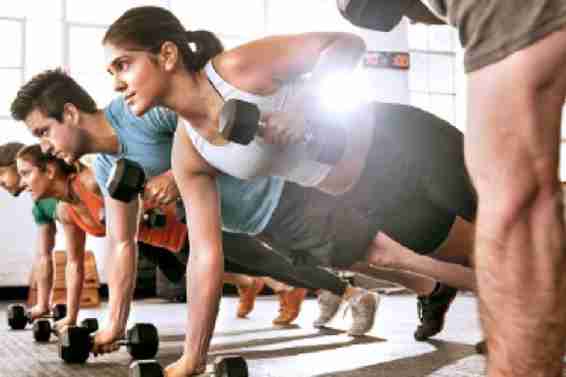As a mental performance mastery coach, I believe fitness should not be constrained by gender. Although exercises themselves do not discriminate based on gender, it is important to take certain factors into consideration when developing workout programmes specifically for women. The article aims to delve into the intricacies of women’s training and offer practical advice on how to enhance their workout routines for optimal outcomes.
Let’s start by discussing the concept known as Strength Gap. It is crucial to recognise that on average women tend to have lower levels of physical strength compared to men. However this does not mean that women are unable to train with equal intensity or commitment.
While it is generally true that women may not have the same level of strength in terms of lifting heavy weights as men, this difference is not absolute and can vary among individuals. To compensate for this disparity, precise techniques can be incorporated into exercise routines.
TIP #1: MINIMISE THE DURATION OF REST INTERVALS BETWEEN SETS
Women often demonstrate higher levels of muscular endurance compared to men. Therefore, reducing rest time by 30- 40 per cent can help maintain intensity throughout the entire workout session. By doing so women can effectively stimulate their muscles and improve strength development. Additionally, it is important to note that women tend to have faster recovery rates after maximal efforts compared to men, allowing them to benefit from shorter rest periods without hindering progress.
TIP #2: INCREASE THE NUMBER OF SETS PERFORMED
Women have the opportunity to optimise their workout sessions by capitalising on shorter rest periods, thereby increasing the total number of sets they perform. This increased workload has the potential to enhance muscular endurance, promote strength development and facilitate overall progress. Due to their rapid recovery capabilities women have the potential to execute nearly twice as many sets as men.
TIP #3: USE A MODERATE-TO-HIGH REPETITION RANGE
This approach has the potential to enhance muscular endurance and contribute to an overall improvement in strength. By comprehending and implementing these strategies, women have the ability to enhance the effectiveness of their training routines in order to attain their desired fitness objectives. It is crucial to remember that although there may exist broad disparities in strength between men and women, every individual possesses distinct qualities and has the potential to achieve their maximum capabilities through appropriate methods. The objective is to promote inclusivity in the realm of fitness and ensure that women are given equal opportunities to excel in their training. The utilisation of varying percentages of one repetition maximums (1RMs) can potentially yield different outcomes for individuals of different genders. In general, women tend to exhibit a stronger inclination towards moderate-to-high repetition ranges, particularly among individuals who are new to physical training. The use of this repetition scheme enables individuals to enhance their self-confidence and adjust to their existing levels of strength. As women accumulate additional experience and enhance their physical capabilities, individuals have the option to gradually integrate lower repetition ranges into their training regimen. It is crucial to recognise that although there may be variations in strength between men and women, women can still attain exceptional outcomes by adhering to suitable training methodologies. Women have the ability to enhance the effectiveness of their workouts and successfully achieve their fitness objectives.
TIP #4: GRADUALLY INCREASE WEIGHT LOAD
When increasing the weight load it is crucial to proceed in small increments. This approach helps minimize the risk of overwhelming the body and mind. For instance, instead of making the significant jump of 10kg, women can gradually increase dumbbell weight by 5kg to reduce any intimidation associated with weightlifting. By employing this strategy. Individuals ensure a gradual progression while maintaining a positive mindset and promoting consistent growth.
TIP #5: CONSIDER EITHER WHOLE BODY WORKOUTS OR UPPER/LOWER BODY WORKOUTS FOR MAXIMUM EFFICIENCY
Many women prefer experiencing overall fatigue rather than localised fatigue when participating in physical exercise. To align their training regimen with their specific goals, individuals can opt for whole body workouts, which have proven to be highly effective for those aiming for fat loss. Alternatively, an upper body/lower body split can be utilised for a well rounded training plan. It should be noted that an arms/legs/torso split is not recommended for women due to lower strength levels. The best approach for maximising exercise benefits among women involves engaging the entire body.
TIP #6: TECHNIQUES FOR EXTENDING PROGRAMME DURATION AND PRIORITISATION
It is generally advisable to change workout programmes every four to six sessions. However, some women may benefit from extending their participation in a specific programme if they prioritise working on their technique. Women’s progress rate in training tends to be comparatively slower than that of men. By increasing programme duration, women have an opportunity to improve their technique while also building selfassurance. This approach ensures a sturdy foundation and facilitates gradual progression towards achieving their highest potential.
In the realm of fitness, exercises should not be classified as exclusively “male” or “female”. Nonetheless by integrating the subtle differences between men andwomen into the training plan we can effectively acknowledge and address each genders unique characteristics.
This significantly enhances effectiveness. When designing workouts for women, coaches should take various factors into consideration such as strength levels, recovery capacity, and individual preferences. By considering these aspects carefully, coaches can tailor workouts specifically to meet the unique needs and goals of women. Embracing these differences in our methodology is what our organisation strives for as it allows us to establish a fitness environment that promotes inclusivity and facilitates optimal outcomes for all individuals.






